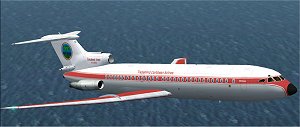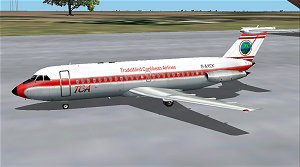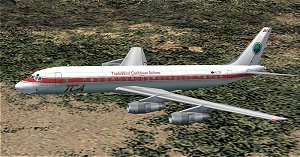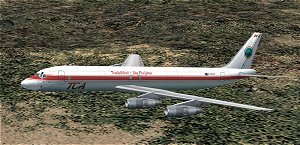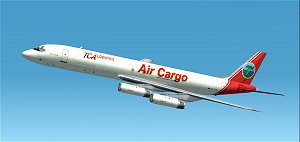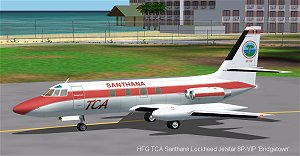FS2002 DH106 Comet 4C PJ-COM 'Eclipse' in 1950s scheme
de Havilland started work on the Comet design following the Brabazon Committee's proposals for post war commercial aviation in 1943. A design for an aircraft to fly the Atlantic at 500 mph was proposed and was accepted by BOAC. Production started on an initial order of 8 in 1947.
The new aircraft was a huge advancement in aerodynamics,
materials and performance. It had a pressurized cabin and with it's 4
Rolls Royce Ghost (Avons in later versions) turbo jets, it could fly much
higher & faster than previous airliners.
BOAC took delivery in 1951 & put the aircraft into evaluation on a
number of routes. After very successful trials, the BOAC Comets started
the worlds first jet passenger service in May 1952, London Heathrow to
Johannesburg.
There were 3 crashes in the first year. Two were put down to pilot error, with over rotation on take off blamed. Another was put down to an in flight break up due to the severe turbulence of a tropical storm. However when another two mysteriously broke up in flight in 1954, the aircraft's air worthiness certificate was revoked & the Comet was grounded.
This event sparked the largest accident investigation effort that the world had ever seen, establishing the British as world leaders in accident investigation. The crashed Comet was rebuilt in a hangar as engineers searched for a cause. Another Comet was submerged in a huge water tank and was repeatedly pressurized to quickly simulate hundreds of flights. After one of these caused a rupture in the fuselage, they had their answer. The problem was found to be due to metal fatigue. The repeated change in pressure had weakened the metal where the stress was concentrated at the corner of a window.
To their enormous credit, de Havilland imediately published all of their data & findings to prevent possible further loss of life. This however effectively handed the market to Boeing & Douglas, with their 707 & DC-8 projects taking full advantage of the research.
The windows were redesigned, with the square shape being rounded, to dissipate the stress. A number of other improvements eventually saw the Comet reintroduced as the Comet 4 in 1958. The Comet was never taken on in great numbers, due in part to it's tarnished reputation. However the Comet 4 did go on to prove itself as a sound & reliable aircraft. It gave many years service & rebuilt the Comet name, so that it could rightly be remembered with pride as the World's first jet airliner.
TCA flew the Comet for many years on both long and medium haul flights. This splendid example wears the 50s livery, and is available for special flights by arrangement with the President.

